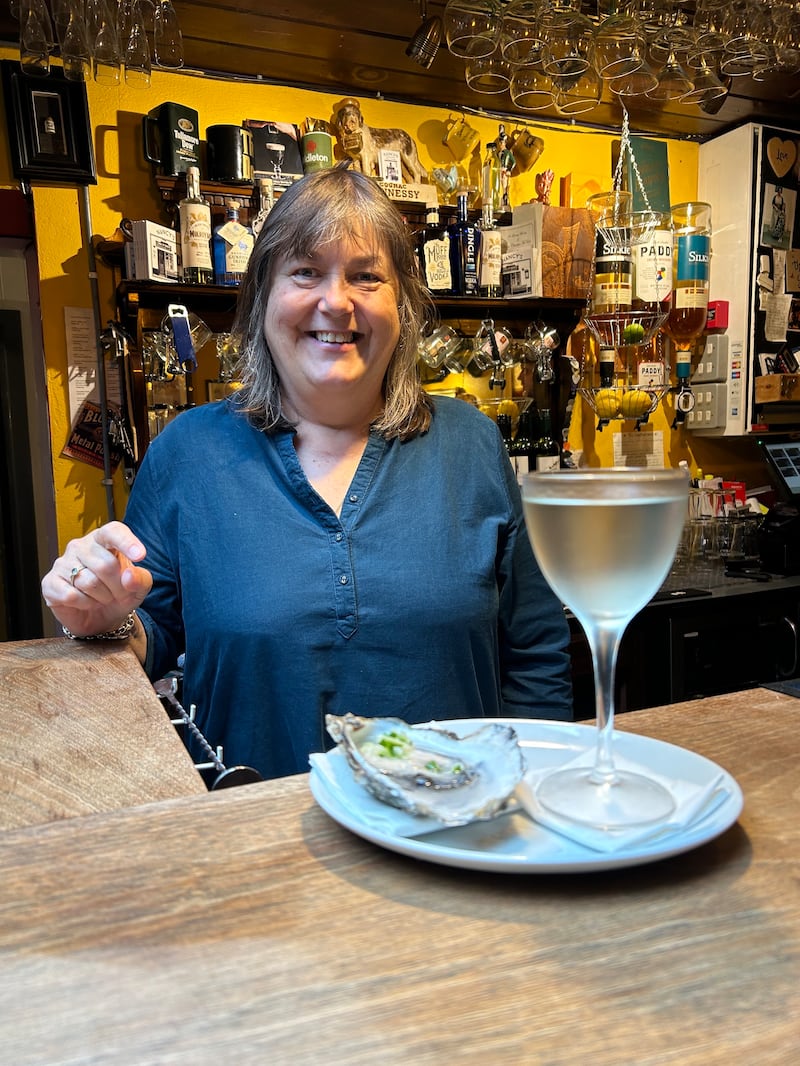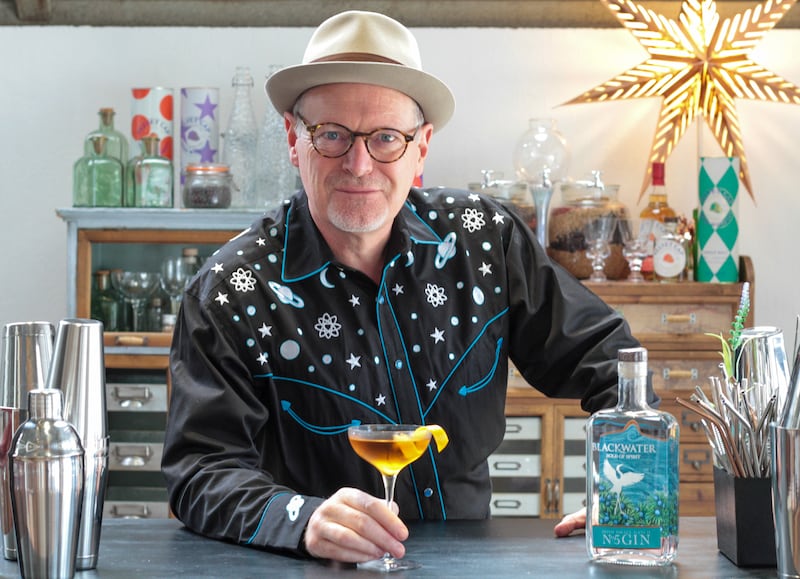“I’d like a dry martini, Mr Quoc. A very dry martini. A very dry, arid, barren, desiccated, veritable dust bowl of a martini. I want a martini that could be declared a disaster area. Mix me just such a martini.”- Hawkeye Pierce, M*A*S*H
What has happened to the martini? Once, the noble cocktail consisted of gin, a dash of dry vermouth and a twist of lemon, served ice-cold. The only variations were an olive instead of lemon, or vodka in lieu of gin. Lemon brings a citrus note, olives or olive brine (a dirty martini) a saltiness. Assembled correctly, it is a beautiful drink.
Nowadays, you cannot go anywhere without coming across some aberration. We have espresso, pornstar, appletini, chocolate and a huge number of other variations that bear little resemblance to the original. Is there any end to the martini madness? And are they even martinis?
David Embury in the cocktail makers’ bible, The Fine Art of Mixing Drinks, argues that the original martini (or martinez as it was then called) was made with “equal parts of Old Tom Gin, which was sweetened, sweet Italian vermouth, with a bit of sugar syrup, a few dashes of bitters, and a dash, perhaps, of curaçao or of absinthe”. The dry Martini, he says, “has been a matter of slow and rather painful evolution”.
READ MORE
I asked four gin experts and a mixologist, to come up with their recipe for the perfect dry martini. Perfect with a small “p” as The Perfect Martini is a recipe containing both sweet and dry vermouth.
Most agree that the glass should be chilled, the cocktail stirred and not shaken. There are countless arguments as to how much vermouth should be added. Some rinse the glass with vermouth, while some add one or two drops to the gin. Some are merely gin – not always a bad thing in my book.
First up Stanley Tucci, actor and writer and now world brand ambassador for Tanqueray. Tucci uses Tanqueray No.10 in his ideal extra-dry martini. He is something of a minimalist, using just three ingredients. He will accept lemon peel or olives instead of grapefruit but points out that it does change the flavour. Otherwise, his recipe is three to four parts gin to one part dry vermouth. I found it excellent, but marginally preferred it made using the original Tanqueray London Dry Gin.
Stanley Tucci’s dry martini
Ingredients:
- 0.5 ounces (about 15mls) dry vermouth
- 1.5-2 ounces (45-60mls) Tanqueray No.10 Gin
- Grapefruit peel
Method:
Pour the gin into a shaker with ice and add the dry vermouth. Stir using a bar or teaspoon. Strain into a chilled martini glass and garnish with a twist of grapefruit peel.
Moira Doherty’s An Dúlamán Muckross martini

Moira Doherty is a distiller and banríon an gin (gin queen) from Donegal. “With its signature umami and savoury character, An Dúlamán makes a mighty martini, and as with all things Donegal, we’re proud to say that it stands apart,” Doherty says. “It contains five seaweeds, bringing an authentic and innovative umami twist to any martini. It really comes alive in strong, spiritous drinks like a martini where its character stands up against other strong flavours.”
Doherty’s An Dúlamán version is admirably simple and has the unusual addition of green Chartreuse. It created a lovely contrast to the tangy savoury notes. I really enjoyed it, although it is certainly not a classic martini.
Ingredients:
- 60ml An Dúlamán Irish Maritime Gin
- 10ml green Chartreuse
- 10ml dry vermouth
- 1 bay leaf
Method:
Stir, strain and garnish.
Gary Quinn’s Drumshanbo Gin martini
Gary Quinn is in-house mixologist with Drumshanbo Gunpowder Gin, one of our best-selling craft gins. “In my opinion the simpler the cocktail, the better,” he says. “Within this drink you should get all the aromatics of the orange as well as the botanicals of the gin. Both will play with the botanicals of the vermouth. It should be very dry, with only a touch of sweetness. Make sure to store your vermouth in the fridge afterwards to preserve its freshness.”
Ingredients:
- 60mls Drumshanbo Gunpowder Irish Gin
- 30mls Cocchi Di Torino Extra Dry Vermouth
- 2 dashes Bitter Truth orange bitters
- Orange peel
Method:
Fill the mixing glass with ice. Stir the ingredients for no less than 30 seconds. If your preference is a little colder and a little more diluted, then stir for longer, to taste, but no more than one minute. With a knife or kitchen peeler, peel the rind of an orange, about the length of your middle finger and place the rind on the rim of the glass.
Peter Mulryan’s Blackwater Distillery martini

Peter Mulryan of Blackwater Distillery says he prefers “a dry martini, very classic, with zest of pink grapefruit. I’m not so heavy on the olives and dirty martinis though”. He gives me an intriguing recipe that includes both dry and sweet vermouth to go with his Blackwater No.5 Gin.
“It is very good served very cold,” he says, “put the gin in the freezer. It is almost sherryish – a lovely halfway point between dry and sweet. Add a twist of orange or grapefruit. You could add angostura bitters, but I don’t. Our gin is spicy – old spice with two orange elements, both sweet and bitter. The sweet is up front and the Seville oranges gives you marmalade, so it only needs a light twist of citrus.”
Ingredients and method:
One shot of Blackwater No.5 Gin, mixed with equal proportions of dry vermouth and rosso vermouth, and a twist of citrus, if you like.
Oisín Davis’s martini

Cocktail guru Oisín Davis’s recently published Irish Kitchen Cocktails (Nine Bean Rows), includes details on how you can batch 14 martinis in a one-litre bottle, store it in your fridge door, and dip into it any time you like.
Ingredients:
- 1 x 500ml bottle Blackwater No.5 Gin
- 150ml Noilly Prat
- 1 tbsp Richmount Elderflower Cordial
- 130ml water
- ¼ tsp salt
- Lemon peels to garnish
Method:
Pour the gin, vermouth and elderflower cordial into a large jug and stir with a spoon for 30 seconds. Add the water and salt and stir it all up for another 30 seconds. Decant into a clean one-litre swing-top bottle. Stick it in your fridge door, shake and garnish before drinking.
















